Monday, October 31, 2022
Robert Henry Thurston Lecture
10:00 AM - 11:00 AM | Pheoris West BC Third Fl. | Hilton Hotel
Thurston Award
Robert O. Ritchie, University of California Berkeley
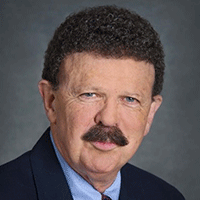
Robert O. Ritchie is the H.T. & Jessie Chua Distinguished Professor of Engineering in the Materials Science & Engineering and Mechanical Engineering Departments at the University of California Berkeley. He is also Faculty Senior Scientist at the Lawrence Berkeley National Laboratory. He holds M.A., Ph.D. and Sc.D. degrees in physics/materials science from Cambridge University. Prof. Ritchie is known for his research on the fracture and fatigue of a broad range of engineering and biological materials, with current interests focused on the mechanical properties of natural materials and damage-tolerance in multiple-element metallic alloys. He is a Fellow/Foreign Member of the Royal Society and of the Royal Academy of Engineering in the U.K., and the U.S. National Academy of Engineering, the Russian Academy of Sciences and the Royal Swedish Academy of Engineering Sciences.
Lecture: Fracture Resistance in Biological and Engineering Materials
The ability of a material to undergo limited deformation is a critical aspect of conferring toughness as this enables the dissipation of high stresses which would otherwise cause fracture. Indeed, resistance to fracture is a compromise - a combination of two, often mutually exclusive, properties of strength and deformability. It can also be considered as a mutual competition between intrinsic damage processes that operate ahead of a crack tip to promote its advance and extrinsic crack-tip shielding mechanisms that act at, or behind, the tip to locally diminish crack-tip stresses and strains. We examine here how such interplay is utilized to derive damage-tolerance in natural materials, e.g., bone skin, fish scales, and in engineering structural materials such as aerospace ceramic-matrix composites, nuclear graphite, and advanced metallic materials, such as high-entropy alloys.
Materials Division Centennial Celebration Symposium – Materials Past Present and Future (MD-CCS)
4:00 PM - 6:30 PM | Pheoris West BC Third Fl. | Hilton Hotel
Presenters’ information for the Symposium is available here.
Tuesday, November 1, 2022
Koiter Lecture
5:00 PM - 6:00 PM | C162 AB | Columbus Convention Center
Warner T. Koiter Medal
Vikram Deshpande, University of Cambridge
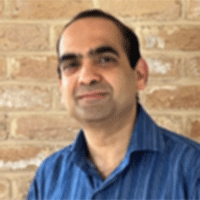
Vikram Deshpande was born in India on 29 February 1972 and received his bachelor's degree in mechanical Engineering (B.Tech.) from the Indian Institute of Technology, Bombay in 1994 and his Masters (M.Phil.) as well as PhD both from Cambridge University in 1995 and 1998, respectively. After holding the Maudslay research fellowship at Pembroke College Cambridge and a visiting Professorship at Brown University as the Lindemann Research fellow working with Alan Needleman, Deshpande joined the faculty at the Cambridge University Engineering Department in 2001. He was promoted to Professor in 2010 having been an Associate Professor at the Mechanical Engineering Department at the University of California, Santa Barbara from 2006-2008 and a visiting Professor at the Technical University of Eindhoven for about 10 years.
His research is in the broad area of experimental and theoretical solid mechanics and aims to strike an appropriate balance of experiment and theory of sufficient complexity to solve engineering problems. His work includes: (i) the development of new micro-architectured materials across length-scales for diverse applications such as large-scale lightweight structures, energy absorption and shock mitigation; (ii) experimental and theoretical investigations of fluid-structure interaction of sandwich structures with application to blast resistant marine and land vehicles; (iii) creation of computational tools for interrogating high temperature plasticity from the dislocation length-scale (nanometres) to larger structural scales and (iv) development of models for the mechanosensitivity of the cytoskeleton in eukaryotic cells.
He has written in excess of 290 international refereed journal publications. He serves on the editorial boards of several leading journals in mechanics and biomechanics including Journal of the Mechanics and Physics of Solids, Modelling and Simulation in Materials Science and Engineering and the Proceedings of the Royal Society, London. He has been awarded prizes that include the Werner Koster award, German Society of Materials (2017), the William Hopkins medal (2018), the 2020 Rodney Hill Prize in Solid Mechanics, Gili Agostinelli Prize from the Accademia delle Scienze Italy (2021) and the 2022 Prager Medal. He has been elected Fellow of the European Mechanics Society (2022) as well as the Royal Society, London (2020).
Lecture: Failure of All Solid-state Li-ion Batteries
Solid-state batteries comprising a ceramic electrolyte and Li metal anode have the potential to deliver enhanced safety along with higher specific energies compared to liquid electrolyte Li-ion batteries. However, stiff, and strong ceramic electrolytes can suffer short circuits resulting from the penetration of Li filaments through the ceramic at charging currents above a critical current density. This is remarkable since the yield strength of Li is on the order of a few MPa while the ceramic electrolytes have strengths of many 100s of MPa and moduli in the GPa range. The failure of these Li-ion cells occurs via two interconnected processes: (i) formation of voids at the Li electrode/electrolyte interface and (ii) growth of Li filaments, that emanate from vicinity of these voids, into the electrolyte. We shall present observations as well as coupled electrochemical-mechanical variational principles to understand how the electrochemistry of these cells drives mechanical failure. Our focus is on developing an understanding of how well-established ideas such as Butler-Volmer kinetics need to be modified in the context of these solid-state batteries. The experiments and models provide many insights, but numerous uncertainties remain with regards the microscale properties of the Li and solid electrolytes as well the mechanisms coupling mechanical deformations and electrochemistry.
Advanced Energy Systems Division Lecture
5:00 PM - 7:00 PM | Charles Massey B Third Fl. | Hilton Hotel
2022 Frank Kreith Energy Award
Ranga Pitchumani, Ph.D., Fellow, Virginia Tech

Dr. Pitchumani is the George R. Goodson Professor of Mechanical Engineering at Virginia Tech. He received the Ph.D. degree in Mechanical Engineering from Carnegie Mellon University, and was with the University of Delaware and the University of Connecticut prior to joining Virginia Tech. Dr. Pitchumani served as the Department Head at the University of Connecticut and as the Associate Department Head for Research at Virginia Tech. From 2011–2015, at the invitation of Energy Secretary Steven Chu, Dr. Pitchumani served as the Chief Scientist for the SunShot Initiative at the U.S. Department of Energy, where he was the founding director of the SunShot Concentrating Solar Power program and director of the Systems Integration program. He is the Editor-in-Chief of the flagship journal Solar Energy, and serves on the editorial boards of other journals in the areas of energy and materials science. Dr. Pitchumani is the author of over 260 articles and is an inventor on 4 patents or disclosures. He is a Fellow of the ASME and has won many professional awards including the ASME Frank Kreith Energy Award, the Charles Greeley Abbot Award and the Hoyt Clark Hottel Award from the American Solar Energy Society and, earlier in his career, the Young Investigator Award from the Office of Naval Research. For his career accomplishments, Dr. Pitchumani was recognized by his alma mater, the Indian Institute of Technology, Bombay, as a Distinguished Alumnus in 2016.
For pioneering scientific contributions in the fields of solar engineering, energy conversion and energy storage technologies, his visionary stewardship as Chief Scientist of the SunShot Program at the U.S. Department of Energy that has contributed to a pervasive impact on the nation’s renewable energy future, as well as leadership in mechanical engineering administration and education.
Materials Division Awards Lectures
3:00 PM - 6:30 PM | Gina Knee Fourth Fl.| Hilton Hotel
Sia Nemat-Nasser Early Career Award Lecture
Ankit Srivastava, TAMU
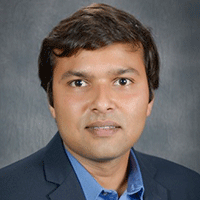
Ankit Srivastava is currently an Associate Professor in the Department of Materials Science and Engineering at Texas A&M University. He was a postdoctoral research associate at Brown University from 2013-2015. He completed his graduate studies from University of North Texas during which he received two MS degrees, one in Materials Science and Engineering and another in Physics along with his Ph.D. in Materials Science and Engineering in 2013. Prior to starting his graduate studies, he worked at Bhabha Atomic Research Centre in India. His research interests lie within Mechanics of Materials with a strong focus on understanding deformation and failure mechanisms of structural materials using computational and experimental methods of Solid Mechanics and Materials Science. He is a recipient of 2016 ACS-PRF Doctoral New Investigator award, 2017 Haythornthwaite foundation research initiation award from Applied Mechanics Division of ASME, 2020 NSF CAREER award, 2022 and 2021 AISI finalist medals, and 2022 TMS-AIME Robert Lansing Hardy award.
Lecture: Crystallographic Slip, Cracking and Kinking in Atomically Layered Ternary Carbides
A family of atomically layered ternary carbides and nitrides with a combination of strong intralayer and weak interlayer atomic bonds, referred to as MAX phases, possess unique set of properties. These are lightweight, elastically stiff, thermodynamically stable and refractory, like ceramics, but are also thermal and electrical conductor, thermal shock resistant, damage-tolerant and readily machinable, like metals. Herein, we aim to better understand the single crystal level mechanical response of MAX phases to unravel the nature and origin of their unique set of properties, in particular, their damage-tolerance. To this end, we first characterize the mechanical response of single crystals of MAX phases using compression testing of micropillars with a range of crystallographic orientations. Our results show that MAX phases undergo non-Schmid crystallographic slip. Furthermore, depending on the crystallographic orientation, the micropillars of MAX phases either undergo only crystallographic slip, crystallographic slip followed by cleavage cracking or cleavage cracking without any appreciable amount of crystallographic slip. The non-Schmid crystallographic slip in MAX phases is also found to be sensitive to their atomic stacking. These micropillar experiments are then complemented with crystal plasticity finite element analysis using a novel constitutive model that accounts for the non-Schmid effects on the crystallographic slip. Next, using an in-house designed and build fixture we carried out in situ SEM mechanical testing of carefully grown single crystals of these materials. The results of this exercise show that even though MAX phases readily crack along the weakly bonded crystallographic planes, onset of an abstruse mode of deformation, referred to as kinking in these materials, induces large crystallographic rotations and plastic deformation that physically heal the cleavage cracks. As a whole, these results explain the puzzling observation that MAX phases, instead of undergoing catastrophic fracture, demonstrate unconventional damage tolerance.
Centennial Mid-Career Award
Samantha Daly, UCSB
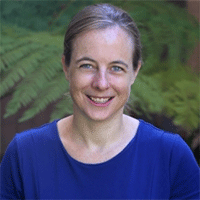
Samantha (Sam) Daly is a Professor in the Department of Mechanical Engineering at UCSB. She received her Ph.D. from Caltech in 2007 and subsequently joined the University of Michigan, where she was on the faculty until 2016 prior to her move to UCSB. Her research interests lie at the intersection of experimental mechanics, materials science, and data science. Currently, the group is engaged in the development of new methods of multi-scale material characterization and analyses via machine learning to understand the deformation and failure of advanced structural materials. Prof. Daly is a Fellow of The American Society of Mechanical Engineers (ASME).
Lecture: Machine Learning for the Experimental Mechanics of Structural Materials
This talk will discuss some of the core opportunities and challenges at the intersection of machine learning and experimental mechanics. The application of data-driven and machine learning approaches to the mechanics of structural materials under a range of representative applications will be discussed, largely in the context of enabling high throughput experimentation and analysis, and in enabling new modes of structural health monitoring. Examples will include i) the use of spectral clustering to identify damage mechanisms from their acoustic emission spectra in ceramic matrix composites for the first time; ii) addressing the pervasive data scarcity problem by using generative adversarial networks in the synthesis of realistic morphologies for high throughput predictive simulations; (iii) addressing the spatial and temporal resolutions of limited experimental data that is vital to our understanding of material response, by adapting physics-informed superresolution approaches to materials data structures; and (iv) the high-throughput segmentation, identification, and analysis of the relationships between microstructure and deformation mechanisms.
Nadai Medal Lecture
George Voyiadjis, LSU
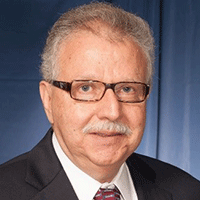
Voyiadjis began his career at LSU in 1980 as an assistant professor after receiving his master’s in civil engineering from the California Institute of Technology and PhD in engineering mechanics from Columbia University. His research is on multi-scale modelling of size effects in materials, encompassing macro-mechanical and micro-mechanical constitutive modelling, experimental procedures for quantification of crack densities, thermal effects, interfaces, failure, fracture, impact, and defect nucleation and evolution. He is a Foreign Member of the Academia Europaea, the European Academy of Sciences, the European Academy of Sciences and Arts, the Polish Academy of Sciences, and the National Academy of Engineering of Korea. He received the 2008 Nathan M. Newmark Medal of the American Society of Civil Engineers, the 2012 Khan International Medal for outstanding life-long Contribution to the field of Plasticity, and the Damage Mechanics Medal from the 2nd International Conference on Damage Mechanics (ICDM2) in 2015. He has two patents, over 370 referred journal articles and 23 books (12 as editor). He gave over 430 presentations as plenary, keynote and invited speaker as well as other talks. He has secured more than $40 million in research funds from the NSF, the DoD, the AFOSR, the Louisiana Department of Transportation and Development, NASA, NOAA, and major companies such as IBM and Martin Marietta.
Lecture: Gradient Enhanced Physically Based Plasticity with Size Effects: Crystal Plasticity to Gradient Continuum Plasticity
A physics-based crystal plasticity is presented with evolution relations for dislocation densities to assess the understanding of nonlocal behavior of metals at the microlevel. It incorporates length-scales in conjunction with evolution equations of dislocation densities. It is applied to compression of micropillars with showing the relationship between complicated dislocation patterning. This work develops a nonlocal continuum theory to address the plasticity and heat transfer behavior of metallic materials of small volumes in fast transient times. Over the size scale range in which most of the experiments have been conducted, the number of dislocations is generally so large that a continuum formulation is required to describe the deformation. The thermodynamically consistent strain gradient plasticity (SGP) model is developed to investigate the size effects and mesh-dependency of the material behavior. The proposed model is conceptually based on the dislocation interaction mechanisms and thermal activation energy. This work addresses phenomena such as size and boundary effects and in particular microscale heat transfer in fast-transient processes. Not only the partial heat dissipation caused by the fast transient time, but also the distribution of temperature caused by the transition from the plastic work to the heat, are included into the coupled thermo-mechanical model by deriving a generalized heat equation. The derived constitutive framework and the corresponding finite element models are validated through the comparison with the experimental observations conducted on micro-scale thin films. The proposed model is first applied to the stretch-surface passivation problem for investigating the material behavior under the non-proportional loading condition in terms of the stress jump phenomenon, which causes a controversial dispute in the field of strain gradient plasticity theory with respect to whether it is physically acceptable or not. Finite element implementation for small deformation is performed to investigate the size effects and the grain boundary effect of small-scale metallic materials. The size effects during hardening as well as the mesh-sensitivity during softening are studied by solving the shear band problem.
Wednesday, November 2, 2022
Noise Control and Acoustics Division: Rayleigh Lecture
4:00 PM - 5:45 PM | C162A | Columbus Convention Center
Rayleigh Award
Marco Amabili, McGill University
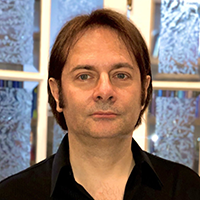
Professor Amabili holds the Canada Research Chair, Department of Mechanical Engineering, McGill University, Montreal, Canada. His exceptional research contributions span several areas of dynamics, solid mechanics and fluid-structure interaction. In particular, he is the author of over 500 scientific papers in vibrations and applied mechanics, 260 of which are published in prestigious refereed international journals, including the high-impact and multidisciplinary Nature Communications, Physical Review X and PNAS. In 2008 Amabili wrote the monograph “Nonlinear Vibrations and Stability of Shells and Plates” published by Cambridge University Press. For this book, he received the Worcester Reed Warner Medal of the ASME in 2020; this medal was established in 1930 to honor seminal contribution to the permanent literature in engineering. His second monograph, again for Cambridge University Press, appeared in 2018. Professor Amabili is the Contributing Editor of the International Journal of Non-linear Mechanics (Elsevier), Associate Editor of Journal of Fluids and Structures (Elsevier), and Co-Editor-in-Chief of International Journal of Mechanical System Dynamics (J. Wiley). Dr. Amabili is an elected Fellow of the Royal Society of Canada, Foreign Member of Academia Europaea, Member the European Academy of Sciences and Arts, Fellow of the Canadian Academy of Engineering, Member of the European Academy of Sciences and Fellow of the Engineering Institute of Canada. He received the prestigious 2021 Raymond D. Mindlin medal of the American Society of Civil Engineers (ASCE) and the 2021 Cataldo Agostinelli International Award of the “Lincei” National Academy of Sciences of Italy. In 2022, he received the Guggenheim Fellowship in Engineering (Natural Sciences), and the Blaise Pascal Medal in Engineering of the European Academy of Sciences. Amabili is one of the five members of the Executive Committee of Applied Mechanics Division of the ASME. Amabili is also the chair of the Canadian National Committee for IUTAM (International Union of Theoretical and Applied Mechanics) and he is the chair of the conference series ICoNSoM (Int. Conference on Nonlinear Solid Mechanics).
Nonlinear Damping and Active Control in Vibrations: Modelling and Experiments
An increase in damping is relevant for the passive control of vibrations and noise. Experimental data clearly shows a strong and nonlinear dependence of damping on the vibration amplitude for beams, plates and shells of different size and made of different materials. While the frequency shift of resonances due to geometric nonlinearity is commonly of 10 to 25 % at most for common structural elements, a damping value several times larger than the linear one should be expected for vibration of thin plates with a vibration amplitude about twice the plate thickness. This is a huge change. Therefore, the nonlinear nature of damping affects more structural vibrations than stiffness nonlinearity, even if it has not been sufficiently studied yet. A model of nonlinear damping is derived from viscoelasticity for single-degree-of-freedom systems and for rectangular plates. The damping model obtained is nonlinear and the parameters are identified from experiments. Numerical results are compared to experimental forced vibration responses for large-amplitude vibrations of different continuous structural elements, like beams, plates and shells, made of metal or composite materials. The second part of the talk addresses active vibration control of sandwich plates by using 4 PZT actuators and 4 sensors. A non-collocated MIMO PPF controller is used to significantly reduce the vibration of the first 8 modes without significant spillover into higher frequencies. The electro-mechanical coupling is experimentally identified in order to proceed with the optimization of the controller.